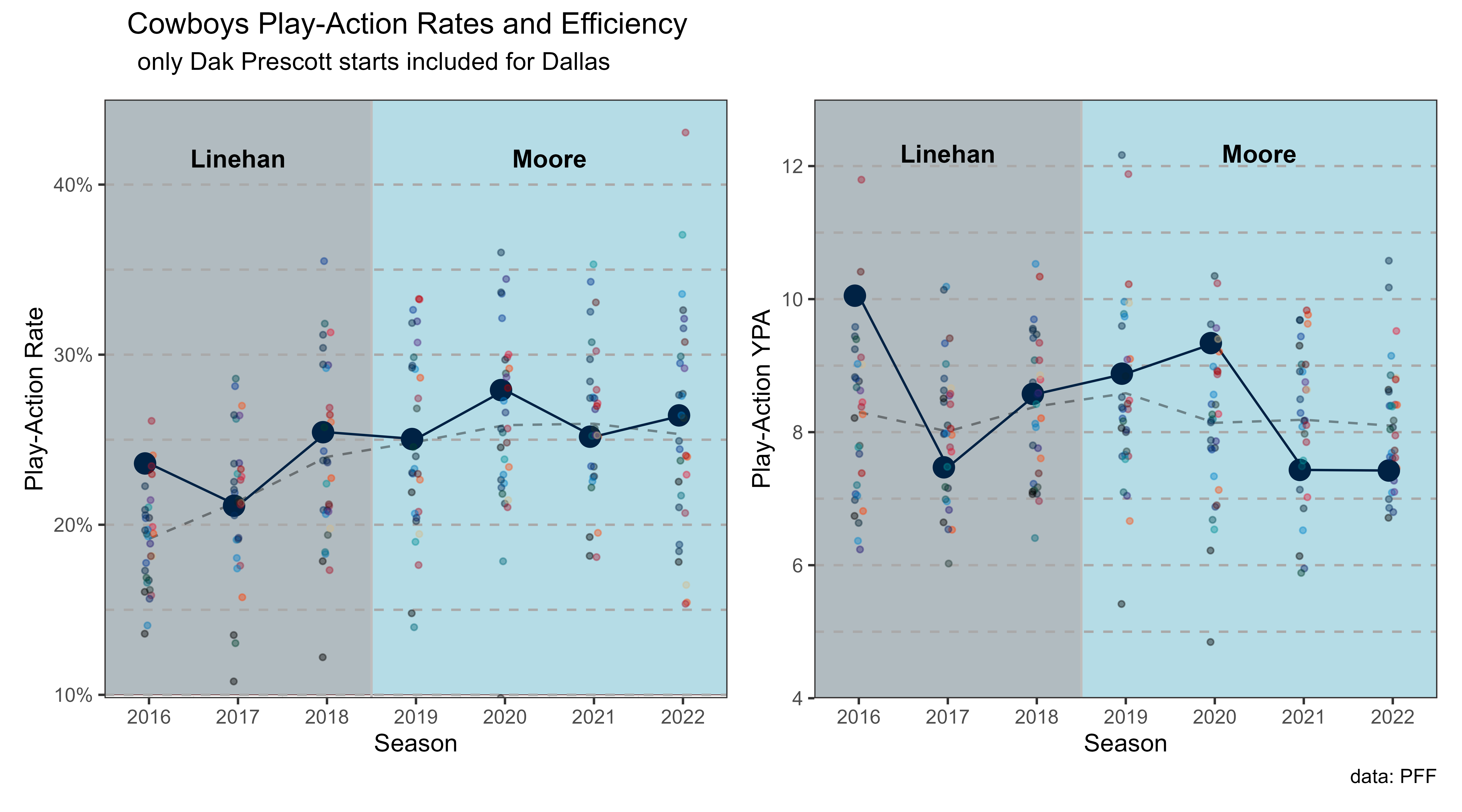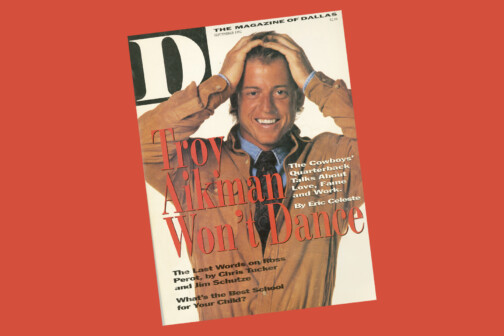There was a mass exodus of coaching personnel at the Star after the Cowboys were bounced from the playoffs by the 49ers for the second straight year. One name that wasn’t on the initial list of dismissals was offensive coordinator Kellen Moore, who had handled play-calling duties since 2019. But on Sunday, reports surfaced that Moore and the Cowboys had agreed to part ways. Less than 24 hours later, the Chargers announced Moore would take over as their offensive coordinator. It’s safe to say the folks in L.A. are pretty excited about what he’s bringing to his new team.
moore of this, pls. pic.twitter.com/PrITQPC7nH
— Los Angeles Chargers (@chargers) January 31, 2023
Moore did indeed lead quite the successful offense in his four seasons in Dallas. Why then, did the Cowboys not make a stronger push to keep the architect of the offense around for another season? And more importantly, was letting him move on the right decision?
The truth is we won’t know until we see the offensive production of the Cowboys and the Chargers over the next couple of seasons. But let’s take a deeper dive into the success of the Dallas offense over the last few years, and try to parse out how much credit belongs to Moore.
Moore inherited a trio of Pro Bowl skill-position players at the start of his tenure: Dak Prescott, Ezekiel Elliott, and Amari Cooper. He also inherited two of the best offensive linemen of their era in Zack Martin and Tyron Smith, even if the latter had already begun to struggle with annual injuries. With the help of that group, he immediately oversaw the third-most efficient offense in the NFL in terms of EPA per play in 2019, trailing only the Chiefs and the Ravens and their alien quarterbacks. Expected Points Added is a measure of offensive success that takes important factors into account, including down, distance, yard line, and time remaining. At the team level, it’s one of the most stable and predictive measures of offensive success in the public sphere.
For comparison’s sake, let’s look at how the Cowboys’ offense performed by this measure across the Dak/Zeke era. Did Moore really get the most out of these two? Or were they already leading a top offense before his arrival?
Under Moore’s predecessor, Scott Linehan, the offense was about average after the phenomenal rookie seasons from Elliott and Prescott. There was indeed a significant jump in production once Moore took over. Note, however, that only games Prescott started are included here. If you want to know how a Kellen Moore offense performed without Prescott in the driver’s seat, just move down the 2020 dot a tad below 0, and the 2022 dot down just a smidge.
Looking strictly at how well the offense performs is a useful tool when evaluating an offensive coordinator, but it does present some difficulties in separating the coordinator’s skills from the talent on the field. A top-10 quarterback is often a top-10 quarterback regardless of the coordinator. In order to better understand Moore’s style as a coordinator, we can look closer at numbers around play types.
One strategy a coach can employ to make life easier for his players is having a receiver in motion at the time of the snap. The Cowboys stubbornly avoided adding that wrinkle under Moore. In 2022, they had a receiver in motion at the snap 16.3 percent of the time, good for 16th in the NFL, which was a significant increase from the previous year, believe it or not. In every other year of Moore’s tenure, they ranked around the bottom five, both on run and pass plays. This is a small aspect of the game plan, but it is one that has been shown to have a positive effect on an offense, and one that has been largely ignored in Dallas.
Another strategy we can quantify and credit to the coordinator involves looking at how often a team utilizes play-action fakes. There is plenty of evidence that points to play-action passes being more successful than straight dropbacks. Under Moore, the Cowboys’ play-action rates increased a bit, but not at the rate they have across the rest of the NFL.
Perhaps more concerning (and also maybe a cause of the average play-action rates) was the low success rate on these throws. Over the past two seasons, the Cowboys had the seventh-lowest yards per play-action pass in the league. This comes after five years of aggregate above-average performance by Prescott on these plays. That doesn’t speak well for Moore and his offense.
Finally, there’s the most basic way to look at play-caller tendencies: how often a team passes the ball. Generally speaking, passing is more efficient and productive than rushing. With this rendition of the Cowboys offense — Prescott, CeeDee Lamb, Tony Pollard, and an aging Elliott — aligning with the rest of the league as a pass-first team isn’t a bad idea. During Prescott’s starts over the last four years, the Cowboys passed on 61.5 percent of their plays, 19th in the league. However, based on how often we’d expect a team to pass, considering factors such as down and distance, score, and the time left on the clock, Dallas passed a full percentage point less often than most teams did. It’s not a huge difference in a vacuum, and it’s worth wondering how much of this may be Moore’s choice versus a byproduct of Jerry Jones expecting his football team to “go as Zeke goes.” But most NFL teams don’t have all of a quarterback as good as Prescott; at least one Pro Bowl-caliber wide receiver (one of Cooper and Lamb was present in all four of Moore’s years); an explosive pass catcher out of the backfield (Pollard); and two future Hall of Famers blocking for them (Smith and Martin). By rights, the Cowboys should be among the league leaders in passing attempts per game. Every year they weren’t, they left money on the table.
After looking at the numbers behind the Moore-orchestrated offense, the larger picture becomes a bit muddied. Yes, the Cowboys were highly successful, but there’s a good chance that comes down to having a good-to-great QB-RB-WR trio in every one of those seasons. The numbers we can more reliably attach to Moore aren’t as spectacular.
With change comes risk: it’s possible the production suffers instead of progresses with Mike McCarthy calling plays. But there’s also a lot of opportunity for creative tweaks that could make this offense operate at its peak more consistently than it did this season. A change in play callers might not be the safe play, but after 27 years without a Super Bowl, one can understand why the Cowboys don’t mind rocking the boat.
Get the ItList Newsletter
Author








